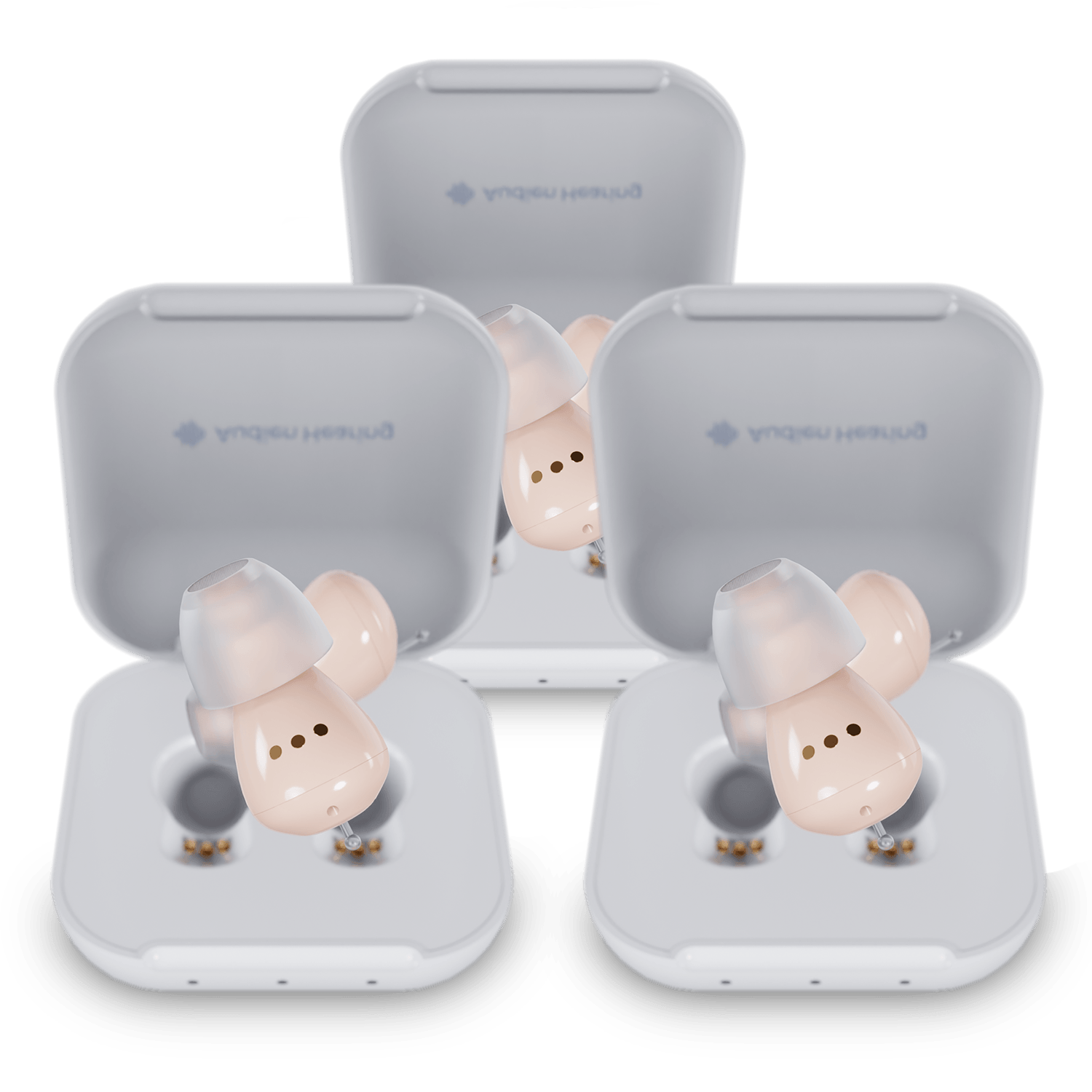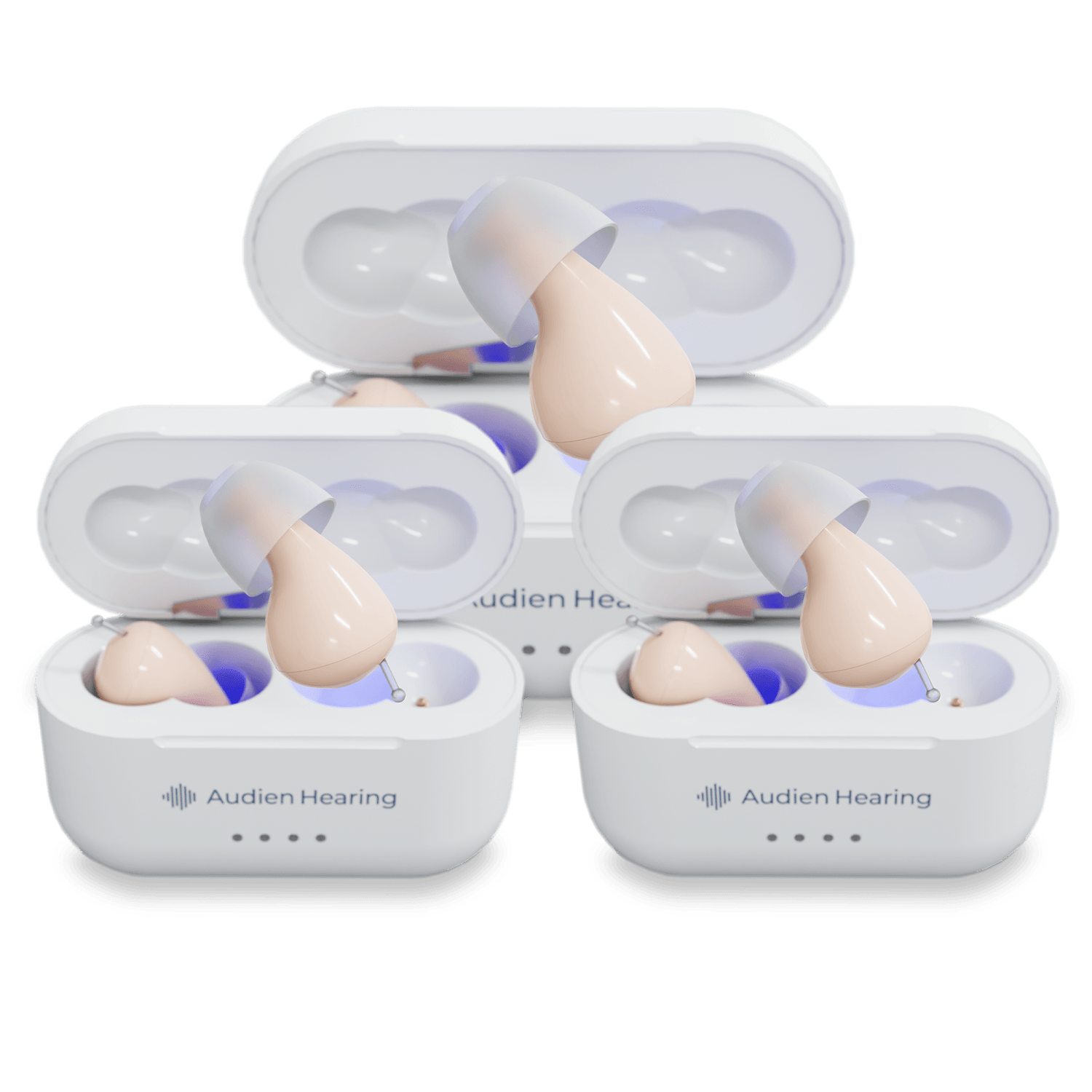Most young adults today have likely had a hearing test as a part of mandated testing in school systems to help screen for hearing difficulties, but this hasn’t always been the case. Older adults today are likely to have not had these hearing tests and, as a result, know little of what to expect from a hearing test.
Many people have some degree of anxiety or nerves when it comes to going to the doctor, and this can be increasingly true when you have no idea what to expect. Will a hearing test hurt, what will they do, what do the results mean, and how long will it take are all very reasonable questions that this article will aim to answer.
Hopefully, though learning more about hearing tests, you will have a better time during your visit and will understand what is being done and why to a better extent.
Step One: Questionnaire
The first thing you can expect when getting a hearing test done is to fill out new patient paperwork. This will include the mundane things like billing, date of birth, and other outline things, in addition to the possibility of a medical and family history section.
If your audiologist clinic allows it, you may be able to complete this form ahead of time to not feel rushed and spend less time in the waiting room. All in all, these documents are not very time-consuming but can take anywhere from five to 15 minutes to complete.
Family History
While a family history may seem unrelated, there are some types of hearing loss that can have a degree of inheritable factors. By answering truthfully, you can allow your provider to have a better understanding of some of the potential risk factors you may carry.
An example would be if one of your parents suffered from neurological degeneration that resulted in a loss of hearing. Giving this information can allow your doctor to be extra cognizant of this and ensure you are not presenting early signs of auditory neuropathy.
Medical Questionnaire
A general questionnaire is also likely since hearing is something that is directly impacted by the environment in which we live.
Questions like occupation can provide valuable information to your provider. This can help them estimate the amount of potential noise exposure you may have encountered in your life and if it could have contributed to hearing loss. You can also expect to see a section that asks you to list your chief complaint, age, and more.
Why Spend Time Asking So Many Questions?
The main reason these questions are asked is to have a better understanding of you and your unique set of risk factors. The factors can inform what tests they will conduct and what they may want to keep a close eye on.
These risk factors can include your genetic predisposition to hearing loss, your age, occupational exposure to loud sounds, and even certain illnesses you have had in the past.
Step Two: Exam Room

Once you have been called back, you will likely be placed in a room with the audiologist. The audiologist will have your paperwork in hand and may ask you questions. This is a great opportunity to talk to your doctor about your specific issues. Let them know what you are hoping for out of the visit.
With the initial new patient introduction out of the way, your audiologist is likely to start conducting a series of tests to understand your hearing ability better and potentially determine what kind of hearing loss you may be dealing with.
Below is a closer look at some of the tests you could encounter while at the audiologist’s office:
Visual Exam
Often, the very first thing an audiologist will do is take a look at your ear canal and eardrum utilizing a device known as an otoscope. Essentially, it is a special eyepiece with a light that allows them to have a clear and magnified look at your ear canal and eardrum.
This test is conducted to ensure that there is no physical obstruction in the ear canal and to ensure the eardrum is completely intact and free of abnormalities or perforations. If there is severe enough obstruction, the audiologist may recommend an earwax extraction to safely remove the compacted earwax. Otherwise, they will most likely continue with the other testing.
In some cases, the doctor may have an otoscope that allows them to also assess the function of the eardrum. These pneumatic otoscopes allow for a small pulse of air to be applied to the canal, which applies pressure to the eardrum and causes it to move. If the movement of the eardrum is impeded, it may point to a potential middle ear problem.
All in all, the visual exam is generally quite fast and can take less than five minutes.
Tympanometry
Another test that may be performed is tympanometry. A tympanometer is a device that is utilized to help show that the eardrum is working properly.
The machine is usually small and has an end that creates a seal with your ear canal. A precise amount of air pressure is applied, and the sensors on the device are able to detect how the eardrum reacts.
The small pulse of air may be uncomfortable, and this is typically the only common test that has some level of discomfort. While possibly uncomfortable, the test itself only lasts a few seconds in each ear.
Audiometry
Audiometry is the main test utilized to quantify hearing ability, and it is the one that can take the longest time. An audiometry exam is actually quite simple and consists of headphones and a device that plays specific tones at specific volumes.
The test takes place in a quiet room, and you will be asked to put on a pair of headphones. With the headphones on, you will be asked to listen for a sound. If you hear a sound, you will be asked to raise your hand.
Every time your audiologist plays a sound at a volume, they will input whether or not you could hear the sound. This test cycles through many of the perceivable tones of sound and many different volumes.
The result of the test is an audiogram. It is often outlined in a graph-like format and will show where your hearing falls on the scale of hearing loss.
Bone Conduction
Another test that may be employed is the bone conduction test. This exam can help your audiologist determine whether your hearing loss is sensorineural or conductive in nature. What this means is that they can determine whether your hearing loss is caused by your inner ear or the middle and outer ear.
With this test (rather than utilizing headphones), the audiologist will utilize a series of tuning forks. The audiologist will touch them to your mastoid process, which is a bone located right behind the ear. For a higher-tech approach, your audiologist may utilize a headband device called an oscillator that achieves the same thing but more precisely.
This test does circumvent the middle ear and just assesses the ability of the inner ear. If you are unable to hear a tone during a normal audiometry test but are during the bone conduction test, it would point to conductive hearing loss in the patient.
Results
After the series of tests, your doctor will have a better understanding of your hearing ability and what may be causing your specific issue. Most of the time, these visits last less than an hour.
By the end of it, your audiologist can tell you what sounds you have difficulty hearing, why you may have hearing loss, as well as offer you potential ways to cope.
In addition to discussing your results, your provider may also offer you hearing aids while in the office. While this can be convenient since you are already there, these hearing aids are oftentimes priced incredibly high.
The important thing to remember is that you are not obligated to buy them; you are allowed to shop around. Below is a closer look at some options to consider.
EV1
The Audien EV1 is an incredible deal for a hearing aid coming in at a sub-one-hundred dollar price point. Many that you will find at an audiologist’s office can be into the thousands of dollars, and for those that are new to hearing aids, it may be best to start off with a less expensive option to test the waters.
Atom
The Audien Atom is a more premium product that carries a slightly higher price, but it is jam-packed with features. It has a 25% longer battery life, is 22% smaller, and has a patented Comfort+ design for all-day comfort.
Hearing and Healthcare
In summary, a hearing test will normally take anywhere from a half-hour to an hour, depending on your specific concerns and the number of tests that are needed. By now knowing what to expect when you are getting a hearing test, you can feel more confident and empowered as a patient to get the care you deserve.
Sources
What Is Auditory Neuropathy? — Causes & Treatment | NIDCD.













